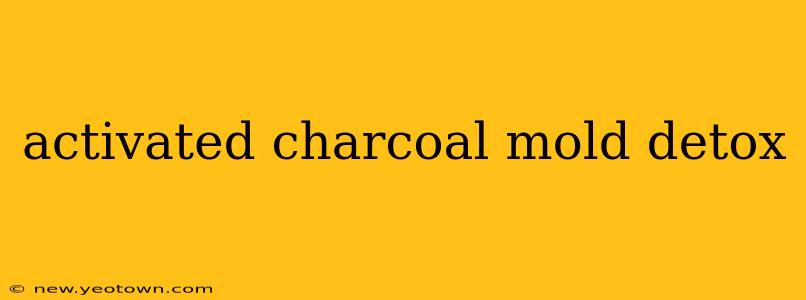Mold exposure can be a serious health concern, triggering a cascade of unpleasant symptoms ranging from allergies and respiratory problems to more severe conditions. For those seeking natural remedies, activated charcoal has emerged as a potential solution for mold detox. But does it truly work? Let's delve into the science and explore the efficacy of activated charcoal in removing mold toxins from the body.
This isn't a magic bullet, however. Activated charcoal is not a cure-all, and its role in mold detoxification needs careful consideration. Before we jump into the details, it's crucial to understand that severe mold exposure requires professional medical attention. This article aims to inform, not replace, the advice of a healthcare professional.
What is Activated Charcoal?
Imagine a sponge with incredibly tiny pores – that's essentially what activated charcoal is. This highly porous material is made by heating various carbon-rich materials, like wood or coconut shells, in the absence of oxygen. This process creates a vast surface area, allowing it to effectively bind to various substances, including toxins.
How Does Activated Charcoal Work for Mold Detox?
Activated charcoal's mechanism revolves around its remarkable adsorption capabilities. When ingested, it acts like a magnet, attracting and binding to mycotoxins (the toxic compounds produced by mold). This binding prevents the mycotoxins from being absorbed into the bloodstream, allowing them to be eliminated from the body through the digestive system.
Does Activated Charcoal Remove Mold from the Body?
The effectiveness of activated charcoal for mold detox is a subject of ongoing debate. While it's proven effective in binding various toxins in laboratory settings, its efficacy in removing mold toxins from the human body after exposure requires further research. It's likely most effective when taken after initial exposure, preventing further absorption rather than actively removing already-absorbed mycotoxins.
Can Activated Charcoal Help with Mold Allergy Symptoms?
While activated charcoal might not directly eliminate mold from your system, it could offer some relief from allergy symptoms. By binding to some of the mycotoxins, it might reduce the inflammatory response triggered by mold exposure, potentially lessening symptoms like sneezing, coughing, and itchy eyes. However, this isn't a guaranteed outcome, and it’s important to consult an allergist for proper diagnosis and treatment of mold allergies.
What are the Potential Side Effects of Using Activated Charcoal for Mold Detox?
Activated charcoal, while generally safe, can have side effects, especially when taken in large doses or for prolonged periods. These can include:
- Constipation: This is a common side effect due to charcoal's absorbent nature.
- Dehydration: Charcoal can bind to essential electrolytes, leading to dehydration. Adequate hydration is crucial when using charcoal.
- Interactions with Medications: Activated charcoal can interfere with the absorption of some medications. Consult your doctor if you're on any medication.
- Black Stools: This is a harmless side effect but can be alarming.
How to Use Activated Charcoal for Mold Detox (If Chosen)
Always consult with a healthcare professional before using activated charcoal, especially if you have pre-existing health conditions or are taking medications. If your doctor approves, follow these general guidelines:
- Start with a low dose: Begin with a smaller dose than recommended on the packaging and gradually increase it as tolerated.
- Take with plenty of water: Adequate hydration is crucial to prevent constipation and dehydration.
- Don't take with food: Food can interfere with the absorption of charcoal.
- Follow the recommended dosage: Avoid exceeding the recommended dose to minimize side effects.
What other methods exist for Mold Detox?
Besides activated charcoal, several other approaches are used to manage mold exposure and its effects. These include:
- Professional Mold Remediation: This is the most effective way to deal with mold in your environment. Removing the source of exposure is crucial.
- Air Purification: Using air purifiers with HEPA filters can help remove mold spores from the air.
- Medical Treatment: For severe mold-related illnesses, medical treatment is necessary. This might include medication for allergies or respiratory problems.
- Dietary Changes: A balanced diet rich in antioxidants can support the body's natural detoxification processes.
Disclaimer: This information is for educational purposes only and should not be considered medical advice. Always consult with a qualified healthcare professional before starting any detox program or using activated charcoal, especially if you have underlying health conditions or are taking medications. Severe mold exposure requires professional medical intervention.

